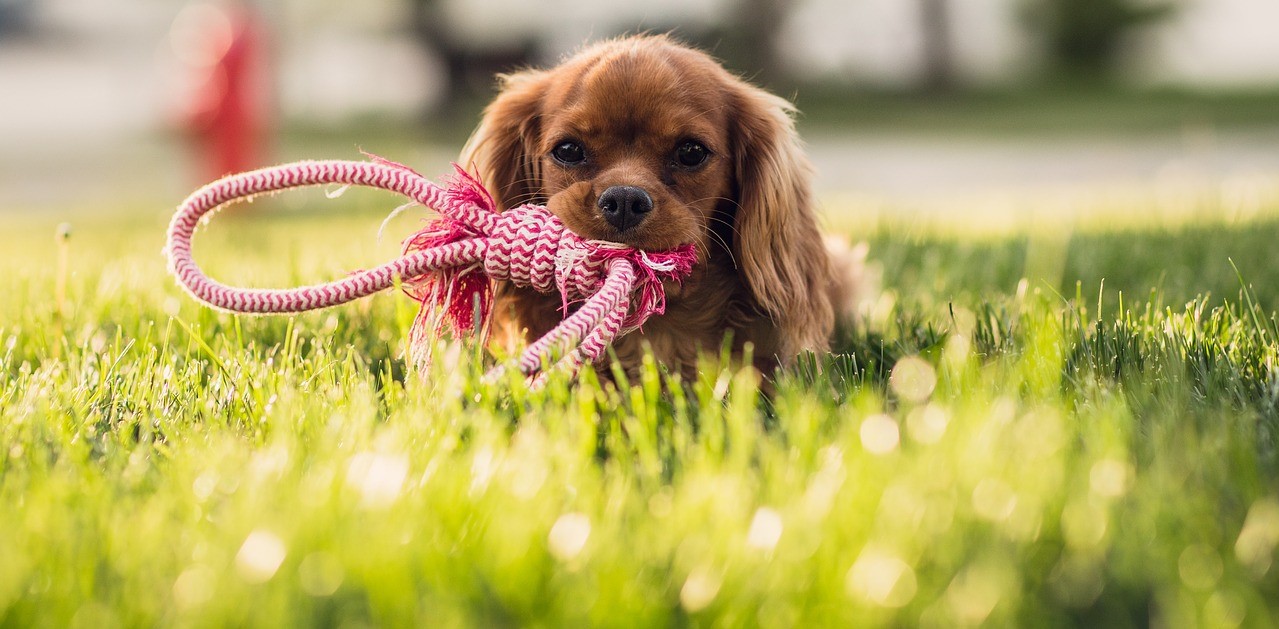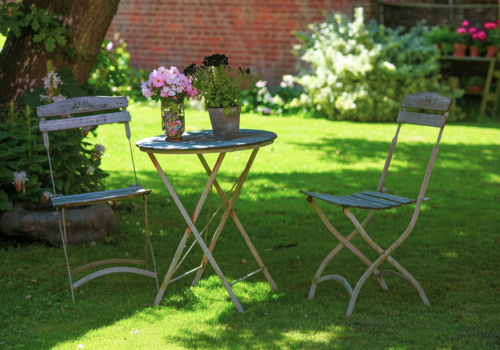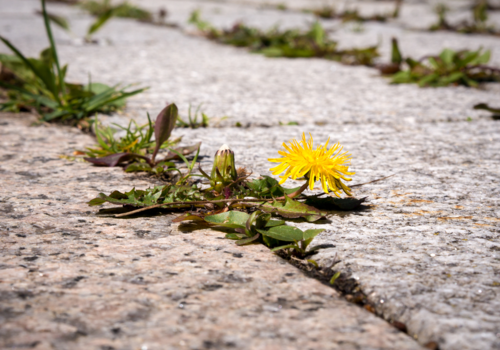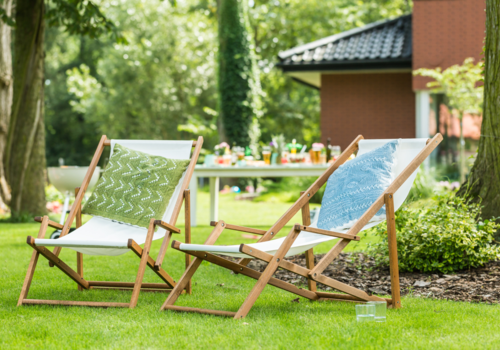
It's important to carry out some basic care tasks for your lawn during July.
This month, you'll want your lawn to look its best so you can enjoy the outdoors. Your top July lawn care priorities will be simple, but there's plenty you can do this month to keep your lawn looking great.
What should I do with my lawn in July?
In July, you’ll need to focus on regular mowing and trimming, as well as keeping the grass green.
The summer weather and high levels of use can take their toll on your lawn so keeping a regular lawn care schedule is a must.
Summer lawn mowing tips
Mowing the lawn in July is very similar to mowing in June.
Usually, your lawn will need to be mowed regularly. We recommend judging the amount of growth you have, but if growth is good, then aim to cut the grass once or twice a week.
Make sure the mower blades are set to the highest setting to prevent any extra stress on the grass. If there are very dry spells, consider reducing the mowing frequency. Mow your lawn once a week or every 10-14 days if temperatures are high.
Is it ok to fertilise my lawn in July?
Yes, it is ok to fertilise your lawn in July provided the weather isn’t too hot and you use an appropriate summer fertiliser. If you used fertiliser in the spring, now is about the perfect time to apply a second treatment.
Make sure you’re feeding your lawn the right nutrients for the season by using a spring and summer lawn fertiliser.
In very warm and dry weather, we wouldn’t recommend applying a lawn feed, as it won’t work without moisture and can add to already stressful conditions. Wait until the soil is damp so the treatment can encourage growth. Apply after rain and after mowing.
Can I scarify my lawn in July?
No, it’s best not to scarify your lawn in July.
If you’ve been following our lawn care calendar, you’ll know that the summer is the worst time to scarify as your lawn will need cool, damp weather to recover from this. It’s best to wait until September / October as this is the best time of year to rake or scarify the surface of your lawn.
Sowing grass seed in summer
Although seeding in late summer and autumn is preferable, you can use grass seed to improve your summer lawn.
Using grass seed is the best way to repair bare patches that have developed through the use of the lawn. Compared to adding new turf, seeding is more cost-effective. You can choose from various grass seed mixes and repair difficult shapes, corners and gradients more easily.
To encourage growth at this time of year, you’ll need to make sure you water the lawn. Soak the ground thoroughly before seeding and water regularly until the roots are established.
Watering the lawn in July
A healthy garden needs moisture, and your grass is no different. However, knowing how and when to water the lawn is crucial.
Although it’s one of the warmest months of the year in the UK, July can see significant rainfall. Make sure to keep an eye on the weather forecast to determine the best watering schedule.
There are a variety of pitfalls when it comes to watering the lawn and incorrect watering can even lead to lawn disease. So when is a good time to water the lawn? And how much water should you add?
Here are our top watering tips for dry spells, when rain is sparse.
- Water in the morning before 10 am and before the temperature increases. This is the ideal time for regular summer watering as it gives time for the moisture to penetrate the soil without leaving it for too long.
- If there has been a prolonged dry spell, and your lawn is extremely dry, then water in the evening. We recommend not doing this regularly, as in some cases it can leave the ground very damp all evening, which can encourage lawn disease.
- Water once or twice per week for best results. It’s not necessary to water every day even during hot weather. Always check the type of soil you have as well as clay soil needs less moisture than sandy soil.
- Soak the soil to a depth of 6 inches, which is adequate to support the root system of your lawn. You might need to test and learn to get the right length of time for your lawns based on the size and soil type.
Check the depth using a screwdriver, if it can be pushed easily into the soil it’s probably moist enough. If it gets stuck part-way it’s probably hitting some hard, dry ground so the water hasn’t penetrated far enough.
- Set your schedule and stick to it. We recommend sticking to a schedule as watering intermittently during summer can force the grass to keep changing between dormant and growth stages, which is stressful for your lawn. Don’t change your schedule unless there has been unexpected weather, for example, heavy rain.
July Lawn Care Tips & Advice
Make sure your lawn looks its best with these extra summer lawn care tips:
- Weed Control: During summer, the weeds are in full swing in your garden. You’ll notice clovers and trefoil in particular amongst your turf. It’s important to tackle these before they go to seed.
Weed treatments should be used with caution in hot weather. Try removing weeds by hand or spot treat individual weeds with a selective weed killer to avoid damage to your lawn. If this leaves some bare patches, you can overseed with grass seed to repair them.
- Moss: As it tends to die back in summer, you’re unlikely to need to treat moss in July. Leave this until the autumn.
- Lawn diseases: This month, the most common lawn disease is red thread. This is more common when the weather is humid so keep an eye out after heavy rain. It is a type of fungus that causes blades of grass to die. You’ll recognise it by the pink tone of the grass.
Applying a spring and summer lawn fertiliser can help to replenish nitrogen levels which will help to combat red thread.
- Ants: At this time of year, ants nests can cause problems for your lawns. The ants hide beneath the grass and their nests can pile up above it. This creates an uneven surface for mowing and if left untreated, can encourage weeds and moss. It’s best to brush away the ants’ nests and use a lawn pest killer to prevent a recurrence.
- Aeration: Just like during June, it’s best to aerate only when needed this month. Work on any compact areas to increase drainage but don’t aerate the whole lawn as it could dry it out too much.
Now you’ve discovered our top lawn care tips for July, you’re well on your way to a fabulous lawn. They say the grass is always greener on the other side, but this year your lawn will have the neighbours green with envy!
Make sure you keep it that way as we move into August and throughout the year by checking our monthly lawn diary. It’s full of advice for spring, summer, autumn and winter lawn care!
If you're looking for some lawn care tips for the coming months, take a look at our next lawn care guides:
How we can help!
Why not add a splash of colour to your lawn edges this summer with our extensive range of wildflower seed mixes? While March is the ideal time to plant wildflower seeds, it's not too late to plan ahead for next season by looking at our range of wildflower seeds and you'll be spoilt for choice with the Boston Seeds selection!
At Boston Seeds we take pride in excellent customer service. If you're growing a lawn from scratch but unsure how much grass seed you need, our handy Grass Seed Calculator can help you figure it out in just a few clicks!
With Next Day Delivery on hundreds of items too, choosing from our extensive range of grass seed couldn't be easier. If you order regularly or need large volumes, then click here to apply for one of our trade accounts - we review all applications within one working day. If you have any questions, then please get in touch.


